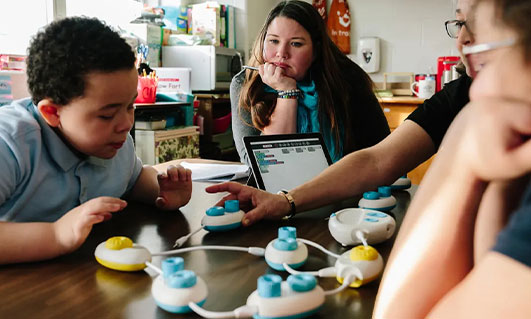
Eating healthy doesn’t have to break the bank, and with a few strategic tips, visually impaired individuals can enjoy nutritious meals without overspending. Here’s how to make healthy eating accessible and budget-friendly.
1. Plan Your Meals
Meal planning is an effective way to manage both health and finances. Consider the following tips:
- Create a Weekly Menu: Outline meals for the week, including breakfast, lunch, dinner, and snacks. This helps prevent impulse purchases and food waste.
- Make a Shopping List: Once you’ve planned your meals, create a shopping list based on the ingredients needed. Stick to this list while shopping to avoid unnecessary expenses.
2. Embrace Whole Foods
Whole foods are often more affordable and healthier than processed options. Incorporate the following into your diet:
- Fruits and Vegetables: Buy seasonal produce, which is typically cheaper and fresher. Consider purchasing frozen fruits and vegetables, as they are often less expensive and have a longer shelf life.
- Grains and Legumes: Bulk buying grains like rice, oats, and whole wheat pasta, as well as legumes like beans and lentils, can save money. These foods are nutrient-dense and versatile.
3. Utilize Adaptive Tools for Cooking
Investing in adaptive kitchen tools can enhance cooking efficiency:
- Talking Kitchen Scales and Measuring Cups: These devices make measuring ingredients easy and accurate, allowing for better control over portion sizes.
- Tactile Cookbooks and Recipe Cards: Use tactile recipes or apps that read recipes aloud to simplify meal preparation and ensure you’re following healthy guidelines.
4. Buy in Bulk and Batch Cook
Purchasing in bulk and batch cooking are excellent strategies for saving money and time:
- Bulk Purchases: Look for sales on bulk items like grains, nuts, and spices. These often have a lower cost per serving and can last longer.
- Batch Cooking: Prepare larger portions of meals and freeze leftovers for later use. This not only saves money but also ensures you have healthy options readily available.
5. Take Advantage of Discounts and Coupons
Using discounts and coupons can significantly reduce grocery costs:
- Store Loyalty Programs: Sign up for loyalty programs at your local grocery stores to receive discounts and offers.
- Mobile Apps: Use apps that provide digital coupons or cashback for groceries. Many stores also have weekly deals that can be accessed via their websites.
6. Prioritize Nutrient-Dense Foods
Focus on foods that offer the most nutrition for your money:
- Protein Sources: Incorporate affordable protein options such as eggs, canned tuna, and beans. These foods are filling and versatile.
- Healthy Fats: Buy nuts, seeds, and olive oil in bulk to use in various dishes. These are nutritious and can enhance flavor without a high cost.
7. Explore Community Resources
Many communities offer resources to help individuals access healthy food on a budget:
- Food Banks and Pantries: Explore local food banks that provide fresh produce and staple items at no cost. Many also offer programs specifically for individuals with disabilities.
- Cooking Classes: Look for free or low-cost cooking classes designed for those with visual impairments. These can provide valuable skills and tips for budgeting while cooking healthily.
8. Stay Mindful of Portions
Being mindful of portion sizes helps manage food intake and reduces waste:
- Use Tactile Markers: Mark containers or portion sizes using tactile dots or rubber bands to help gauge appropriate servings.
- Listen to Your Body: Pay attention to hunger and fullness cues, which can prevent overeating and save money on excess food.
Conclusion
Healthy eating is achievable on a budget with a little planning, resourcefulness, and the right tools. By incorporating these tips, visually impaired individuals can enjoy nutritious meals without financial strain. Remember, the key is to make informed choices, prioritize whole foods, and take advantage of available resources. Eating well is not just about what you spend but also about what you choose to nourish your body and mind. With these strategies, healthy eating can become a delightful and empowering journey.





